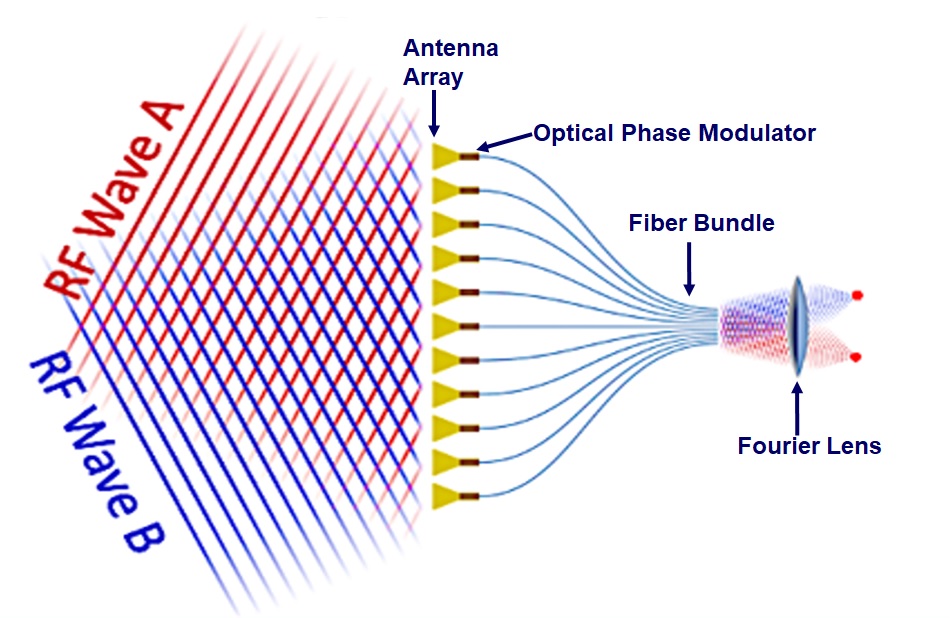Whether it be through our eyes or an instrument, the ability to render spatial images of the environment is critical for understanding our surroundings. Visible imaging systems are ubiquitous in everyday life and they continued to improve through miniaturization and the advent of retina focal plane arrays. Infrared (IR) imaging systems have also evolved from bulky systems with military specific applications to miniaturized hand-held devices with a wide variety of industrial and home use. However, these imaging modalities have inherent limitations when it comes to imaging objects in the presence of physical obscurants or under adverse environmental conditions. These limitations can be overcome by using Millimeter Waves (mmW), which offer a unique advantage for “seeing-through” obscurants such as blowing dust, sand, fog, smoke, and many types of materials including plywood, tents/tarps, plastic paneling, and most types of clothing.
PSI’s mmW imaging technology is based on an optical up-conversion technology that converts an incoming RF or mmW signal up to the optical domain where it is spatially processed using a conventional optical system, which happens at the speed of light! Key to this approach is the ability to up-convert all RF signals using an analog process that preserves spatial coherence across the entire antenna array. In the system shown in Figure 1, each element in the antenna array is connected to one of PSI’s optical phase modulators that serves to up-convert all received RF wavefronts, in this case A and B. Each up-converted signal propagates through an optical fiber and is routed to a common bundle that is fed to an optical processor, which forms an image of the RF scene in the optical domain. This unique technology is the first ever demonstrated imaging phased array RF system that has no inherent limit on beam bandwidth product. Moreover, once imaged each up-converted signal is spatially mapped to a different/unique point, which when used with a CCD camera produces a real-time image or, in the case of a photo-detectors each original RF signal can be fully recovered and immediately down-converted to an intermediate frequency (IF) for direct input into a digital processing system.









